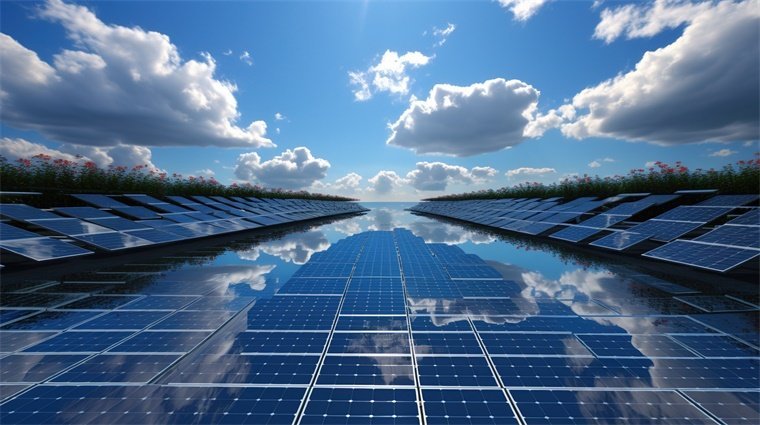Address
304 North Cardinal
St. Dorchester Center, MA 02124
Work Hours
Monday to Friday: 7AM - 7PM
Weekend: 10AM - 5PM
Address
304 North Cardinal
St. Dorchester Center, MA 02124
Work Hours
Monday to Friday: 7AM - 7PM
Weekend: 10AM - 5PM


Shocking! The new intermediate band solar cells (IBSCs) have a theoretical efficiency of up to 63.2%, which is three times higher than ordinary solar cells (with efficiencies around 20%)! The breakthrough discovery by the international research team may revolutionize the solar industry! Netizens have exclaimed: Is the IBSCs concept stock going to set off a boom?
The new favorite of third-generation solar technology
Crystalline silicon solar cells represent the first generation of solar cells, including monocrystalline, polycrystalline and amorphous silicon solar cells. These cells have been widely used in commercial and residential applications and account for 90% of the global PV market. However, their energy conversion efficiency can only reach 15-25% and their production costs are high.
Second-generation thin-film solar cells are fabricated on glass substrates, and while the materials and production costs are lower, their energy conversion efficiency is only 6%-10%.
The goal of third-generation solar cells is to improve energy conversion efficiency, reduce costs, and facilitate applications. They are called new solar cells and include inorganic and organic thin film solar cells, dye-sensitized and quantum dot-sensitized solar cells, and chalcogenide solar cells. Despite the relatively short development time of these cells, they have high theoretical energy conversion efficiencies and relatively low production costs, and thus have great potential for development.
Among them, the intermediate band solar cell (IBSC) is a compelling new concept for improving the global efficiency of solar cells. With a theoretical energy conversion efficiency of up to 63.2%, it is the new favorite of third-generation solar technology and is increasingly favored by the industry.
This increase in cell energy conversion efficiency is achieved by introducing a narrow energy band with a small density of energy states in the forbidden band of the semiconductor. The introduction of this narrow energy band allows for increased sub-bandgap absorption while keeping the open circuit voltage constant. With this improvement, the solar cell absorbs a portion of infrared light in addition to most of the visible light, thereby increasing the current output and energy conversion efficiency of the cell.
Despite the high theoretical energy conversion efficiency of the intermediate band solar cell (IBSC), its performance has not reached the expected level due to its inherent high complexity (the complexation of electrons and holes in the intermediate band) and the destruction of the semiconductor lattice, and the energy conversion efficiency is lower than the theoretical value or even lower than the efficiency level of the general cell. At the same time, the manufacturing cost of the cell is also very high. In addition, IBSCs also have short lifetimes and can only be used at low temperatures, which greatly limits their large-scale preparation and application!
Recently, scientists from Imperial College in the UK and the University of New South Wales (UNSW) in Australia announced the development of a new type of intermediate band solar cell (IBSC) and published their latest research results in the journal RRL Solar. The new design represents a significant advance in the field of intermediate band solar cells. According to the report, the new IBSC adopts a novel solar cell architecture and introduces a unique optical structure, which can effectively utilize more photons in the solar spectrum and improve the photoelectric conversion efficiency of the cell. The publication of this research result also marks an important step in the field of intermediate band solar cells, which is expected to promote the commercialization of intermediate band solar cells.
According to the researchers, the newly designed intermediate band solar cell (IBSC) introduces a completely new solar cell architecture that includes a “ratchet band” (RB), whose energy bands can be seen schematically in Fig. 1. This technological innovation improves the cell lifetime by seven orders of magnitude compared to other similar cells and makes it possible to operate the cell at room temperature. room temperature operation. This breakthrough will lay an important foundation for the future development of IBSCs and represents a major milestone in the field of intermediate band solar cells.
Back in 2020, the two Spanish researchers declared, “We believe that once efficient IBSCs are developed, the scientific community will invest more effort in optimizing the performance of these devices. We believe that once IBSCs are proven to be very efficient and potentially cost-effective, depending on the market segment, the industry will show great interest.” Now that highly efficient IBSCs are being developed, this may be a major reshuffle in the PV industry once more companies participate in R&D and mass production.